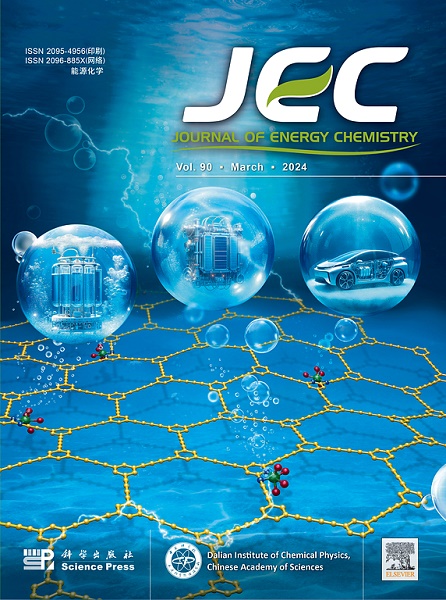Stability of hole-selective self-assembled monolayers in inverted perovskite solar cells
IF 13.1
1区 化学
Q1 Energy
引用次数: 0
Abstract
Inverted p-i-n perovskite solar cells (PSCs) based on self-assembled monolayers (SAMs) as hole-selective layers (HSLs) have produced potential record efficiencies of more than 26% by tuning work function, dipole, and passivation defects. However, the stability of the SAM molecules, the stability of the molecular anchoring conformation, and the impact on the stability of subsequent PSCs have not been clearly elucidated. In this review, we systematically discussed the intrinsic connection between the molecular conformation (including anchoring groups, spacer groups, and terminal groups) and the stability of SAMs. Sequentially, the research progress of SAMs as HSLs in improving the stability of PSCs is summarized, including photostability, thermal stability, ion migration, and residual stress. Finally, we look forward to the shortcomings and possible challenges of using SAMs as HSLs for inverted PSCs.

求助全文
约1分钟内获得全文
求助全文
来源期刊

Journal of Energy Chemistry
CHEMISTRY, APPLIED-CHEMISTRY, PHYSICAL
CiteScore
19.10
自引率
8.40%
发文量
3631
审稿时长
15 days
期刊介绍:
The Journal of Energy Chemistry, the official publication of Science Press and the Dalian Institute of Chemical Physics, Chinese Academy of Sciences, serves as a platform for reporting creative research and innovative applications in energy chemistry. It mainly reports on creative researches and innovative applications of chemical conversions of fossil energy, carbon dioxide, electrochemical energy and hydrogen energy, as well as the conversions of biomass and solar energy related with chemical issues to promote academic exchanges in the field of energy chemistry and to accelerate the exploration, research and development of energy science and technologies.
This journal focuses on original research papers covering various topics within energy chemistry worldwide, including:
Optimized utilization of fossil energy
Hydrogen energy
Conversion and storage of electrochemical energy
Capture, storage, and chemical conversion of carbon dioxide
Materials and nanotechnologies for energy conversion and storage
Chemistry in biomass conversion
Chemistry in the utilization of solar energy
 求助内容:
求助内容: 应助结果提醒方式:
应助结果提醒方式:


